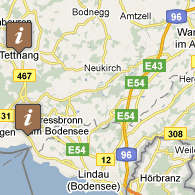The SMB Advantage on the Local SERPs

Big brands seem to have it all, from big budgets to big-time name recognition.
When it comes to how a company ranks in the local search engine result pages (SERPs), however, bigger doesn't necessarily mean better.
Thanks to the overwhelming rise of mobile usage by today's consumers - data from Global Web Index indicates 80 percent of Internet users own smartphones - small businesses have a distinct opportunity to use location to their advantage. After all, it was only last year that Google revealed that 56 percent of mobile searches have local intent and even more recently reported that half of its searches were on mobile devices too. One only has to look to the increasing efforts of multi-location companies to understand why it's good to be a small- or medium-sized business (SMB) today.
All is not lost for enterprises, of course. Surefire Social Founder and CEO, Chris Marentis, provides insights on what they need to do to rank locally, indicating that today's winning brands are ones that harness the power of their various locations and the people at those locations, so they are contributing at a local level to their overall brand strategy.
Enterprises are doing this in a variety of ways. Hard Rock, for example, empowers managers at its many locations to run local social media accounts (e.g. Hard Rock Hotel San Diego), which (1) provides the opportunity to engage with the locals in a relevant manner and (2) provides fresh content that can be indexed. The latter is important because Google is once again working with Twitter to index tweets, in real-time. Similarly, Hard Rock has dedicated websites for their different locations (e.g. hardrockhotelsd.com) and includes landing pages for their various locations hosted on its main site (e.g. hardrock.com/cafes/san-diego) to prove proximity to searchers with local intent. While Hard Rock has roughly 200 locations, this strategy proves much more difficult for a company like Walmart with its 5,000 stores.
These are just a couple of ways national brands are attempting to mimic their more agile local competition, but SMBs don't have to work as hard. For starters, it's much more difficult for large national brands or franchises to push down the local info consumers need at the moment they are searching for it, such as holiday hours, business photos, in-store events, etc. Kenshoo Product Manager for SMB Agencies, Tiffany Miller, says smaller businesses have a unique advantage in this area and, at a minimum, should claim their businesses on Google My Business, as well as spend time maintaining their info on the Google products dashboard. On Google My Business, local companies can optimize their local listings to include business descriptions, contact info, and even photos and videos. For a crash course on Google My Business go to wsm.co/gmybiz.
The information that businesses directly provide Google is of great importance as not only do consumers expect to find what they are looking for without a lot of clicks (especially on mobile devices says Miller), but missing or inaccurate information could also lead to missed conversions. Fernando Angulo, head of international partnerships at SEMrush, reminds business owners that having a brand's NAP data (name, address and phone) accurate across the Web is a must.
Contact information is never more important than when a consumer is searching for a product or service from his or her mobile device. SMB owners who feel they are behind the curve when it comes to mobile-readiness, however, should know that even large brands missed Google's April 21 "deadline" - the day which it said its algorithm update would take effect, which gave "mobile-friendliness" a greater impact on how Google delivers search results to mobile users. American Apparel, with nearly 1.5 million monthly unique visitors (Compete.com) saw the April deadline come and go without becoming Google compliant. To maximize the advantages that the local SERPs provide them, smaller companies need to get mobile quick, a process often thought of as less labor intensive for SMBs (due to their smaller sites) if they know where to start (like Website Magazine's mobile channel at wsm.co/locallyspeaking.










